Sequence impedance for typical winding connections can be found in most text books. These ignore magnetizing impedance branch and is acceptable for positive and negative sequence since shunt magnetizing impedance is typically very high. However, for YG-Y, Y-YG transformers, zero sequence impedance requires knowledge of transformer core structure and winding connections. This is because depending on the type of core and winding connection, zero sequence magnetizing impedance could be low and will affect the overall zero sequence circuit. Ignoring this will have an impact on the phase-ground short circuit calculations for such transformers.
Note that Y-YG connections is not recommended for three phase applications as it is incapable of providing a stable neutral [1].
3 Leg Core Type Transformer: For three phase three leg core type transformer there is no physical return path for zero-sequence flux.
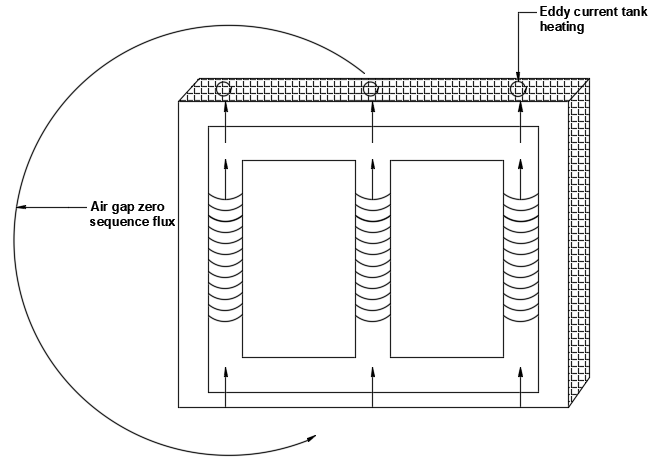
Flux thus has to go through the high reluctance path of air gap and transformer tank. Tank acts as a fictitious tertiary winding. This flux leakage through the tank result in tank heating and can discolor/overheat transformer.
Remember that zero sequence flux has same magnitude and direction (angle) for all three phases. Flux reaches the top and finds that there is no return path to the bottom of core. The only way for flux would be to jump the tank and air gap as shown.
Reluctance across a magnetic circuit with gap ‘g’ and cross-sectional area Ag is given by the following expression:

From this simple expression we can see that when flux is entirely confined to the core (g=0), magnetizing impedance ‘Z’ will be very high. As the flux takes a path through air (g≠0), impedance attains a lower value.
3 leg core transformer zero sequence magnetizing impedance is low between 0.5-1.5 pu of transformer base impedance.
Read: Phase to Ground Short Circuit, Phase to Phase Short Circuit
Lack of zero sequence flux path shortcoming of 3 leg core transformer can be mitigated (to an extent) by using 4th or 5th leg which provides a path for zero sequence flux. Now that flux doesn’t have to flow through the air gap, zero sequence impedance will be large.
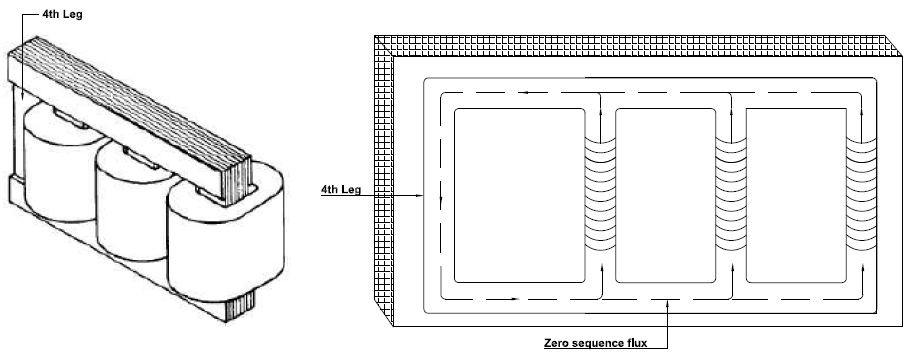
Many commercial power system modelling software do not have option to select between 3 leg and 4/5 leg core construction. The only selection might be core vs shell. Some software then estimates the zero-sequence impedance as ~5 times the positive sequence impedance for core type transformer with YG/Y or Y/YG connections. For three leg core transformers this provides acceptable value of zero sequence impedance while for 4/5 leg units this provides conservative (low impedance which translates in to higher fault current) values. For YG-YG it is acceptable to ignore the zero-sequence magnetizing impedance.
Read: Tank Heating, Zero Sequence Flux and Triplex Transformer
Shell type transformer: Since lateral legs carry zero sequence flux in shell construction, reluctance of the zero-sequence flux path is low, and zero sequence magnetizing impedance is high for normal conditions and slightly unbalanced conditions.
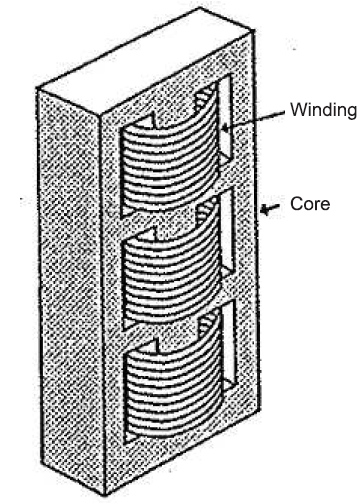
Commercial power system modelling software usually assume the zero-sequence magnetizing impedance as open (high impedance) for shell type Y/YG and YG/Y connections.
Under extreme conditions of unbalance or when zero sequence voltage rises to around 33% the lateral legs can start to saturate. Flux then flows through the air gap and the magnetizing impedance can drop considerably. Though this is rare this should be recognized as a possibility.
Read: Core and Shell Type Transformer
When the transformer has delta winding in the primary or secondary, zero sequence current can freely circulate within the delta. As such, type of core construction does not matter in determining the zero-sequence impedance: the zero-sequence impedance will always be very high (assume to be open circuit).
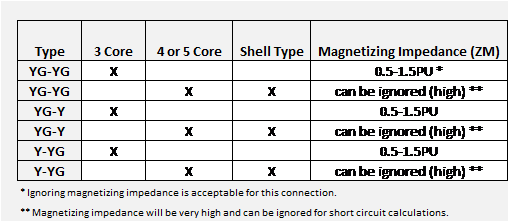
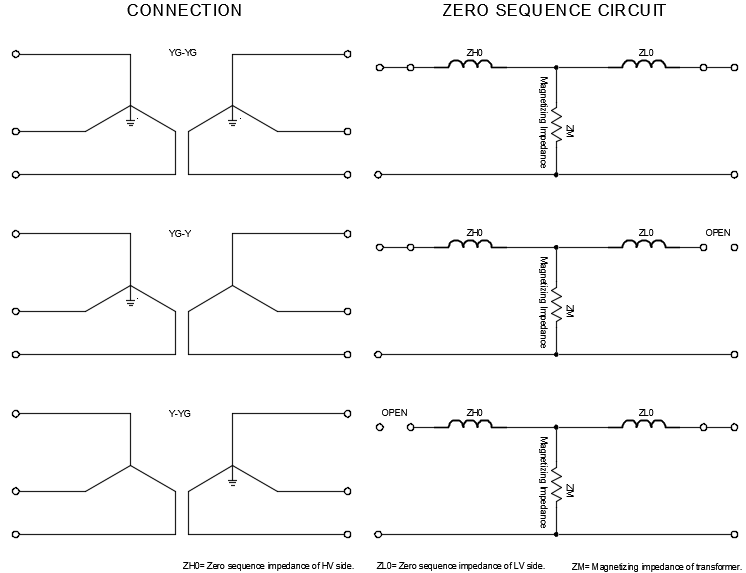
Conclusion
1.Magnetizing impedance of three leg core type transformer is low and need to be accounted for in the zero-sequence circuit for Y-Y transformers. This especially true for 3 leg Y-YG and YG-Y transformers.
2.Typical values of magnetizing impedance for YG-Y and YG-YG is between 0.5-1.5 per unit of the base impedance of the transformer.
3.Shell type or 4/5 leg core type transformers have high value of magnetizing impedance and can be ignored in zero sequence circuits.
4.Delta winding if present suppress the flow of zero sequence flux. In that case core construction does not matter. Magnetizing impedance need not be including in the zero-sequence calculation if delta winding is present.
[1]: IEEE C57.105, IEEE guide for application of transformer connections in three phase distribution systems.
